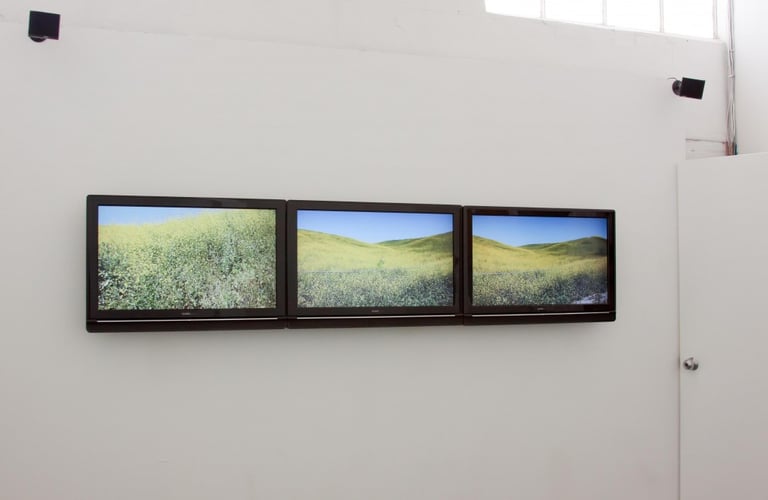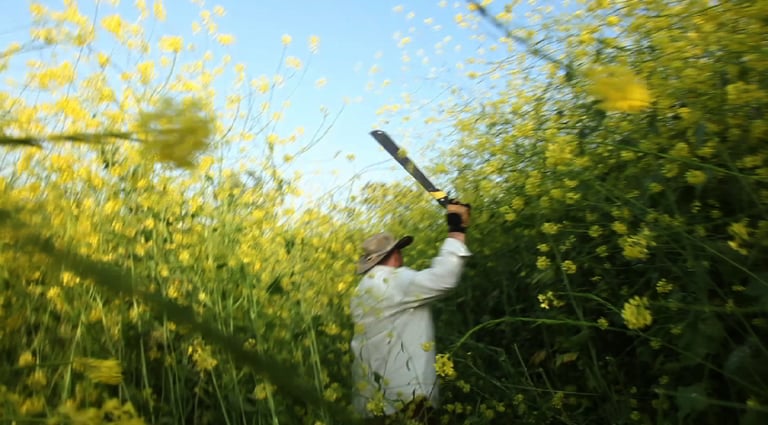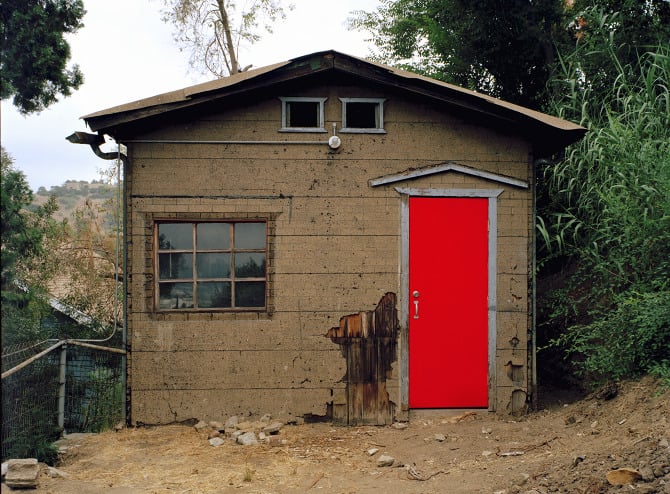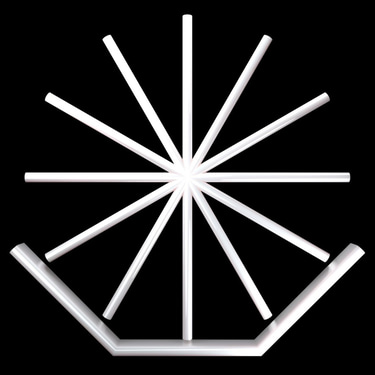El Camino Real
Carmel Ni
7/28/2011


Jeff Cain’s El Camino Real is a 3-channel video installation featured in Speculative, an on-going exhibition at LACE (Los Angeles Contemporary Exhibitions) in Hollywood. The installation is housed separately from the rest of the show, distinguished by both its positioning and subtlety.
The 3-channel video oscillates between scenes of the California landscape and that of man’s futile rage against the encroaching fauna. Acting as a paradigm for colonization through its magnification of the foreign and evasive mustard seed, Cain creates a morphing tableau where the native landscape struggles to take back its ground while the now firmly established mustard continues to flourish.
In California, during what is called the Mission Period, the Spanish colonized California establishing missions, which dotted the native coastline serving as centers of enculturation. Native Californians, a once complex and diverse group of hundreds of regional tribelets, were forced into these missions and became neophytes under the Franciscan padres. Hundreds of thousands of these indigenous people died from European diseases and the survivors lost any sense of autonomy. In El Camino Real, the mustard seed an invasive and poisonous agent, stunting the growth of neighboring plant species, represents the Spanish settlement. As Cain’s video unfolds, different southern Californian ecosystems emerge with each of the three monitors displaying a section of coastline, chaparral grassland, and inland forest.
The content of each monitor individually strays from its source imagery conveying the altered perspectives encapsulated into the plant life. Beautifully shot and composed the piece stands as a botanical snapshot of a specific locality, but unfolds into a well articulated and subtle dissection of what evidence is left behind on a broader scale. What remains is the dominant mustard strain, the evasive crumbs left behind to eat away at the already diminished indigenous life. As an effort to contain this aggressor, Cain has inserted himself into the landscape, now a battleground, with machete in hand, defending what has already been lost. This personal effort can be read as futile expressed by the overwhelming yellow hue of the mustard dominating the foreground as Cain in white attempts to cut a path into the overgrown shrubbery. The iconic shot of Cain, arm raised and machete ready, is a beautiful gesture of reclaiming what has been taken from the land and the people.
The bilingual audio is derived from historical, academic, and anthological sources. The diaristic text, excerpts from the journal of Miguel Costanso the engineer of the Portola expedition, guides the viewer into the landscape through the eyes of the colonizer. The second audio text originates from Cain’s own research, central to the paired course Drawing and Field Botany, which he taught with biologist Cheryl Swift. Other information was gathered from “A Natural History of California” by Allan A. Schoenherr and through field research and original academic research papers on mustard in the California environment.
Jeff Cain is an artist and designer who works with sculpture, video, sound, photography, and performance. Cain refers to his art practice as transdiciplinary and research based. His studio, the Shed Research Institute, is an umbrella organization for independent research, public art projects, and site-specific design projects. Cain received his MFA in Studio Art from Cal Arts. His works have been shown at the Musee dʼart Modern de Ville de Paris and Kyivʼs Center for Contemporary Art, as well as locally at the Getty Museum, Los Angeles County Museum of Art, UCI University Art Gallery, Track 16, and the 18th Street Arts Center.
For more information on Jeff Cain visit his website: shedresearch.net




